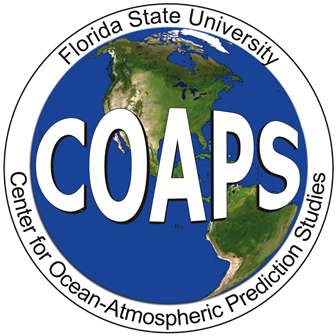Motivation
Physical Oceanography
Continued observations support descriptive cataloging of the region. The environment is transitional, lying between coastal estuarine conditions and wind-driven offshore shelf conditions. Both tidal and wind forcing are important drivers of flow, together with intermittent riverine-dominated stratification. Such knowledge is essential to quantifying transport characteristics, and is key to offshore nutrient fluxes. In addition, many marine life cycles, including Gag grouper, depend on ocean circulation for the transport of eggs and larvae across the continental shelf.
Meteorology
Atmospheric observations provide estimates of the turbulent heat and momentum fluxes in the region. Additionally, the observations provide a unique opportunity to monitor the weather systems in the poorly observed Apalachee Bay. Past observations have documented tropical cyclones, strong frontal passages, squall lines, nocturnal easterly wind jets, and marine fog banks. Wind and wave observations are highly valued by operational (e.g., National Weather Service, U.S. Air Force) and recreational (boaters, fishermen) users. Further analysis of these data may improve oceanic and atmospheric model parameterizations of fluxes and thereby improve the accuracy of forcing fields for oceanographic studies. These observations can also be used to validate atmospheric models, particularly the diurnal variability associated with the land/sea breezes.


